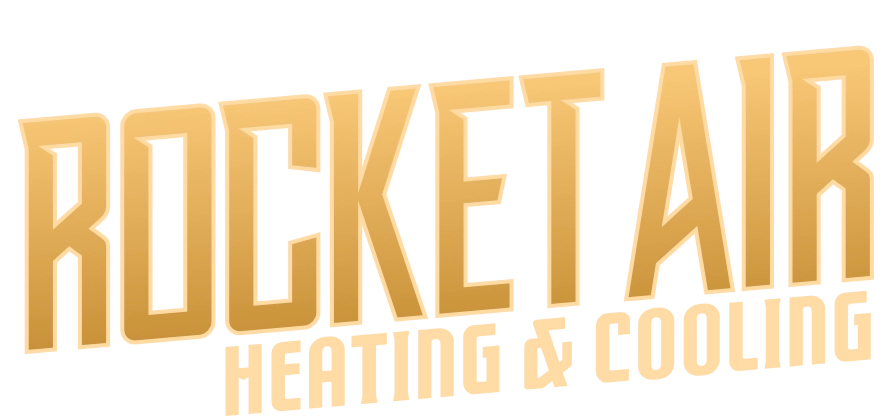If you’ve ever woken up on a freezing morning, glanced at your thermostat, and noticed “AUX” glowing, you probably wondered, what is auxiliary heat and should I worry? As someone who works on heat pumps almost every day, I can tell you that auxiliary heat isn’t a bad thing. In fact, it’s built into your system to keep you comfortable when temperatures dip too low for your heat pump to work efficiently. But if your system is struggling even in mild weather, it may be time to schedule a heat pump repair to get it running efficiently again.
Let’s explore what auxiliary heat does, why it matters, and how you can prevent it from running too much — because that’s when it can start costing you money.
What Is Auxiliary Heat and Why It Exists
Auxiliary heat is the backup heat source inside most heat pump systems. When the outdoor temperature drops below a certain point — often called the “balance point” — your heat pump can’t extract enough warmth from the air outside. At that moment, the system automatically engages electric heat strips (or a gas furnace if you have a dual-fuel setup) to help maintain your desired indoor temperature.
This is a comfort safeguard. Without auxiliary heat, your home could quickly feel chilly on extreme weather days.
How Auxiliary Heat Works
Heat pumps don’t create heat; they move it. That’s what makes them efficient. But when there’s not enough heat in the outside air, the system needs backup help.
When auxiliary heat kicks on, it works like a space heater built into your ductwork. It warms the air passing through the system until the thermostat senses your home has reached the right temperature. Then, it shuts off and lets the heat pump take over again.
When You’ll See Auxiliary Heat Running
You’ll most likely see auxiliary heat running on very cold mornings or when you raise the thermostat by several degrees at once.
However, if you notice the AUX light stays on for long periods — or runs even on mild days — that could indicate a problem worth addressing.
Common Causes of Excessive AUX Heat
Dirty air filters: Restricted airflow forces the system to work harder.
Low refrigerant charge: A struggling heat pump will trigger backup heat more often.
Oversized thermostat changes: Raising the temperature too quickly will cause AUX heat to engage.
Improper system sizing: A system that’s too small for the home will rely on AUX far too often.
Catching these issues early can keep your energy bills from climbing unnecessarily.
Energy Costs and Efficiency
Here’s the big trade-off: auxiliary heat costs more to operate than your heat pump in normal mode. According to the U.S. Department of Energy, an air-source heat pump can deliver up to two to four times more heat energy to a home than the electrical energy it consumes because it transfers heat instead of creating it. In fact, DOE’s example shows a 10.3 HSPF heat pump delivering ~10,300 BTU/kWh versus ~3,400 BTU/kWh for electric resistance—one reason frequent AUX use spikes bills. To avoid unnecessary AUX, keep setpoint changes small and ensure controls are set up correctly. If your system is older or running constantly, upgrading to a newer, more efficient model might be the best solution. Learn more about our heat pump replacement options.
You can reduce its use by sealing air leaks, adding insulation, and keeping your thermostat set at a steady temperature whenever possible.
Simple Ways to Limit Auxiliary Heat
Stay Consistent with Maintenance
Changing your filters every 30–60 days during heating season makes a noticeable difference. A clean system runs more efficiently and relies less on backup heat. Annual professional tune-ups also ensure refrigerant levels, coils, and electrical components are in top shape.
Program Thermostat Settings Gradually
If you like lowering your thermostat at night, bring it back up in small increments in the morning. A sudden jump of 5–6 degrees almost guarantees auxiliary heat will engage. Smart thermostats make this easy by scheduling gradual temperature changes.
Keep the Warmth In
Adding weatherstripping, sealing attic bypasses, and insulating crawl spaces will reduce heat loss. The tighter your home, the less often your heat pump will need help from AUX. For more practical advice, check out DOE’s guide on Operating and Maintaining Your Heat Pump, which covers how to avoid triggering unnecessary backup heat.
When to Call a Professional
If you notice auxiliary heat running constantly — especially when it’s above 40°F outside — it’s time to have the system checked. It could be a refrigerant issue, a thermostat miscalibration, or even a failing compressor. Getting professional help quickly can prevent bigger problems down the road.
Contact Rocket Air Heating & Cooling
Don’t wait until high energy bills hit your budget. Contact Rocket Air Heating & Cooling today to schedule heat pump maintenance or repair service. We’ll make sure your system only uses auxiliary heat when it absolutely needs to.
Final Thoughts: What Is Auxiliary Heat
So, what is auxiliary heat? It’s the built-in backup heat that kicks on when your heat pump needs an assist. When used as designed, it keeps your home warm and comfortable even on the coldest days. By understanding how it works, keeping up with maintenance, and watching for warning signs, you can enjoy cozy winters without overspending on electricity.
If you’re in Modesto, Oakdale, Merced, or one the surrounding areas, our team at Rocket Air Heating & Cooling is here to help. Schedule your service today and keep your home running efficiently all season long.
______________________________________________________________________________________________
Read Next: How Long Does a Furnace Last? Lifespan and Replacement Tips


